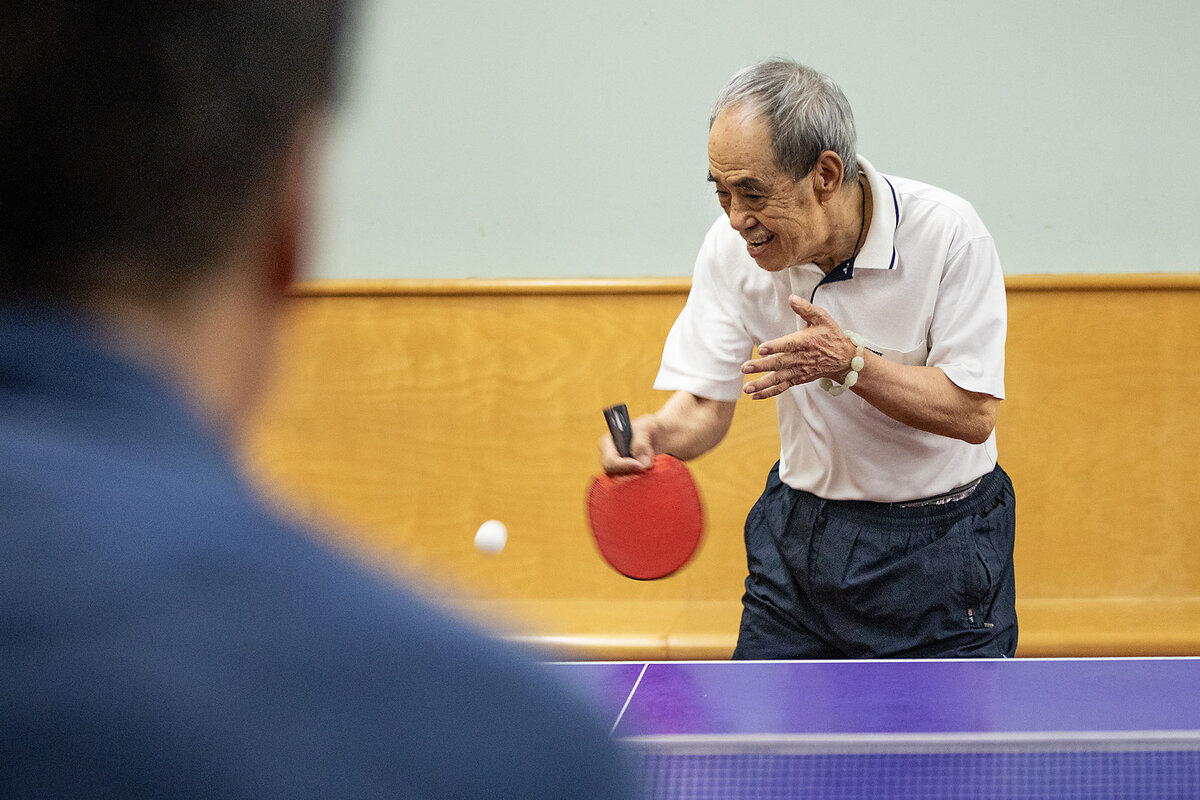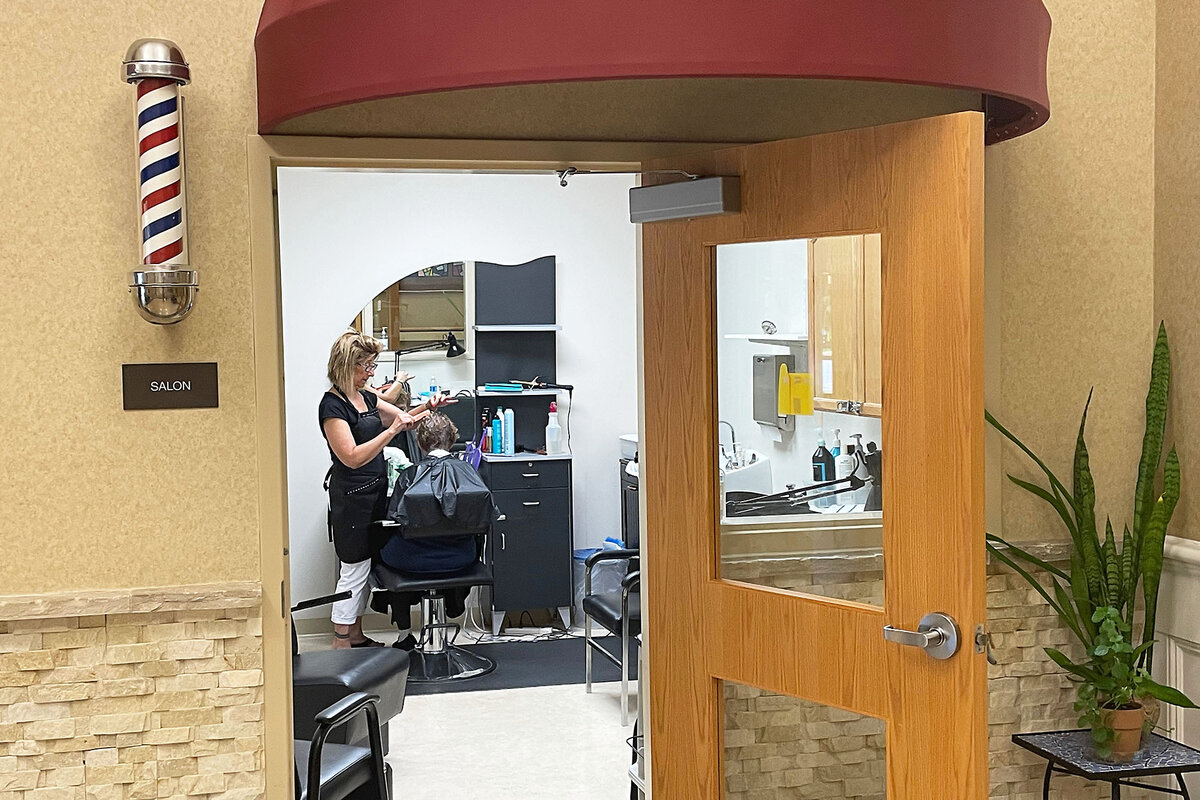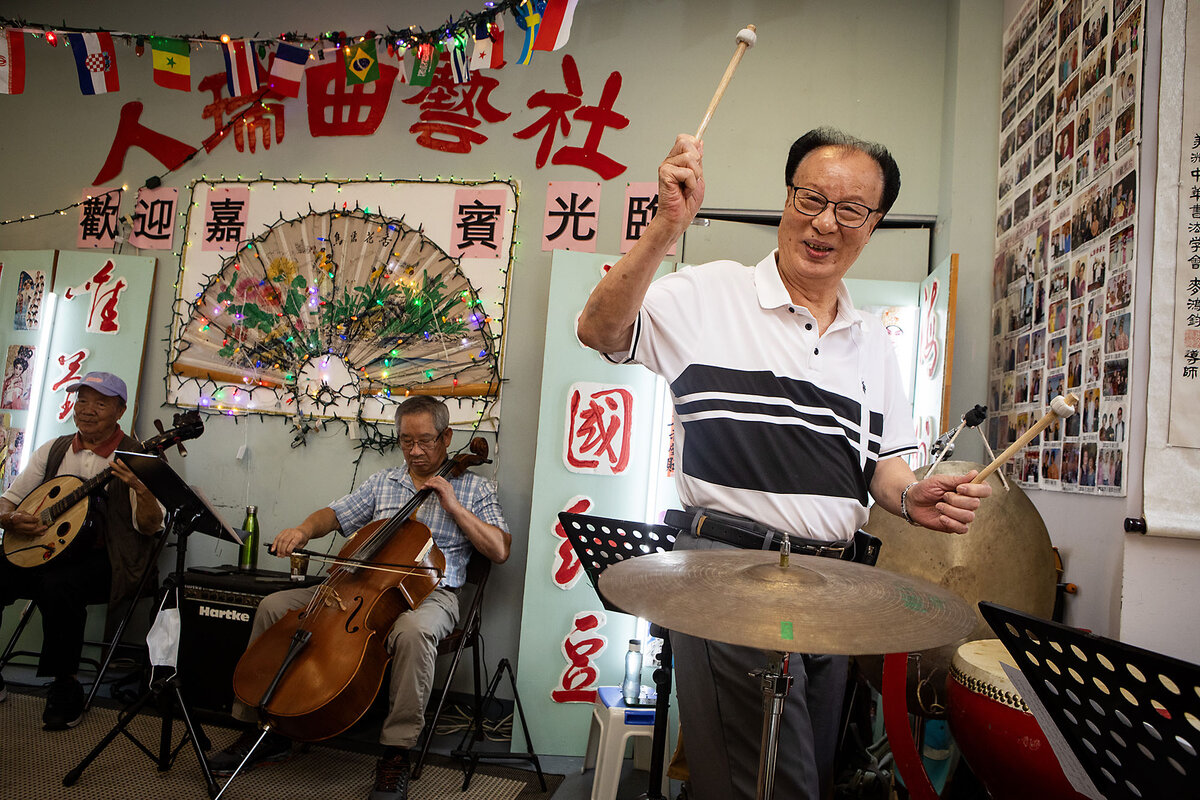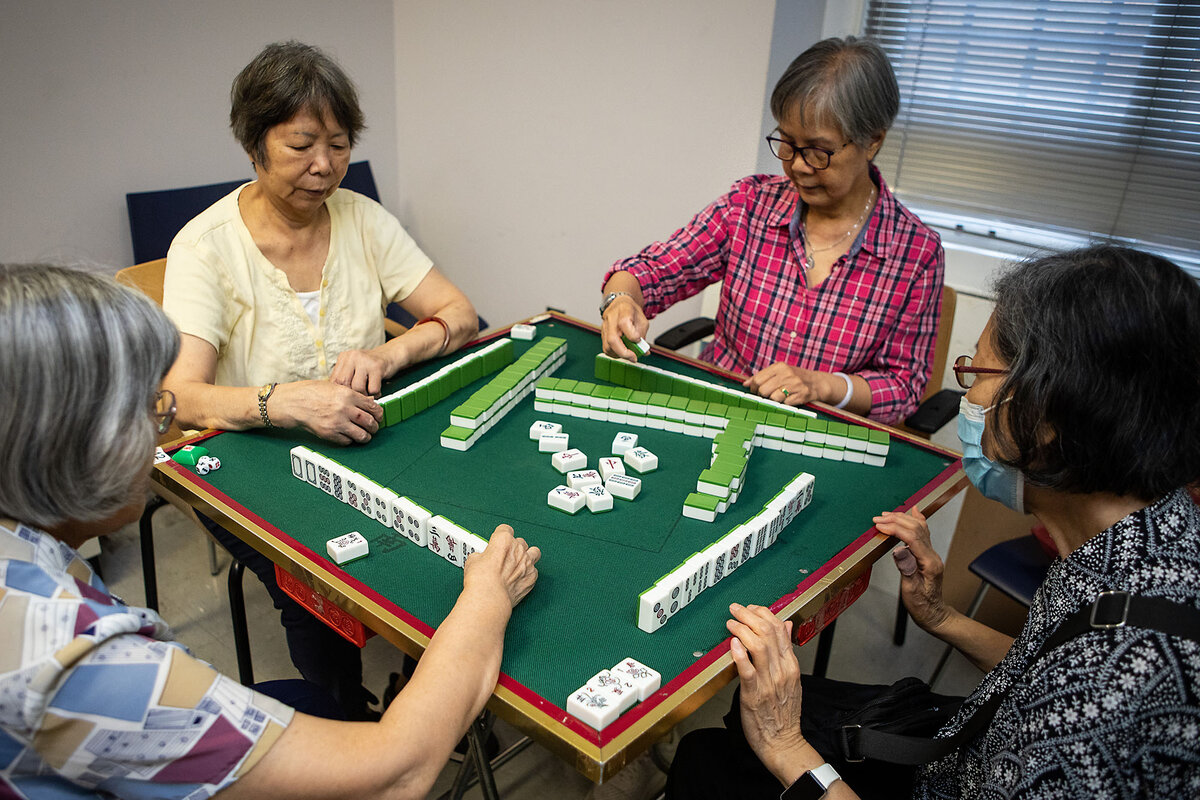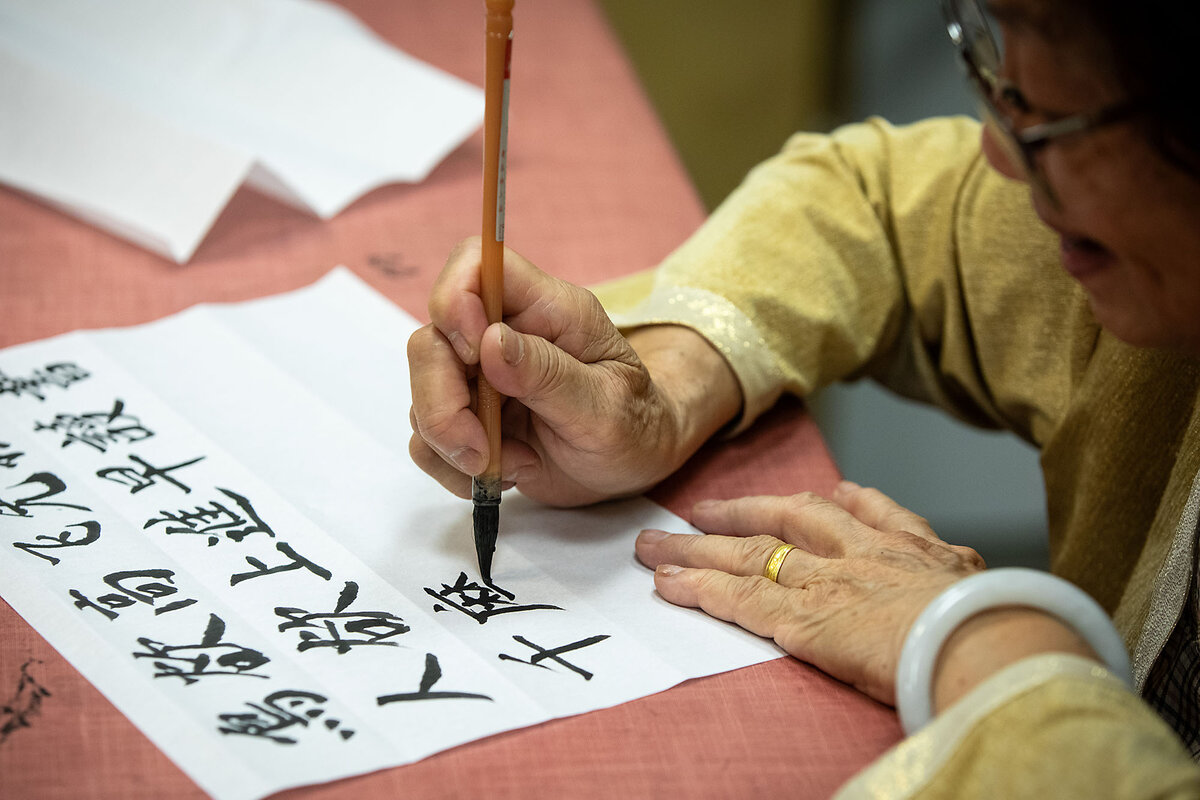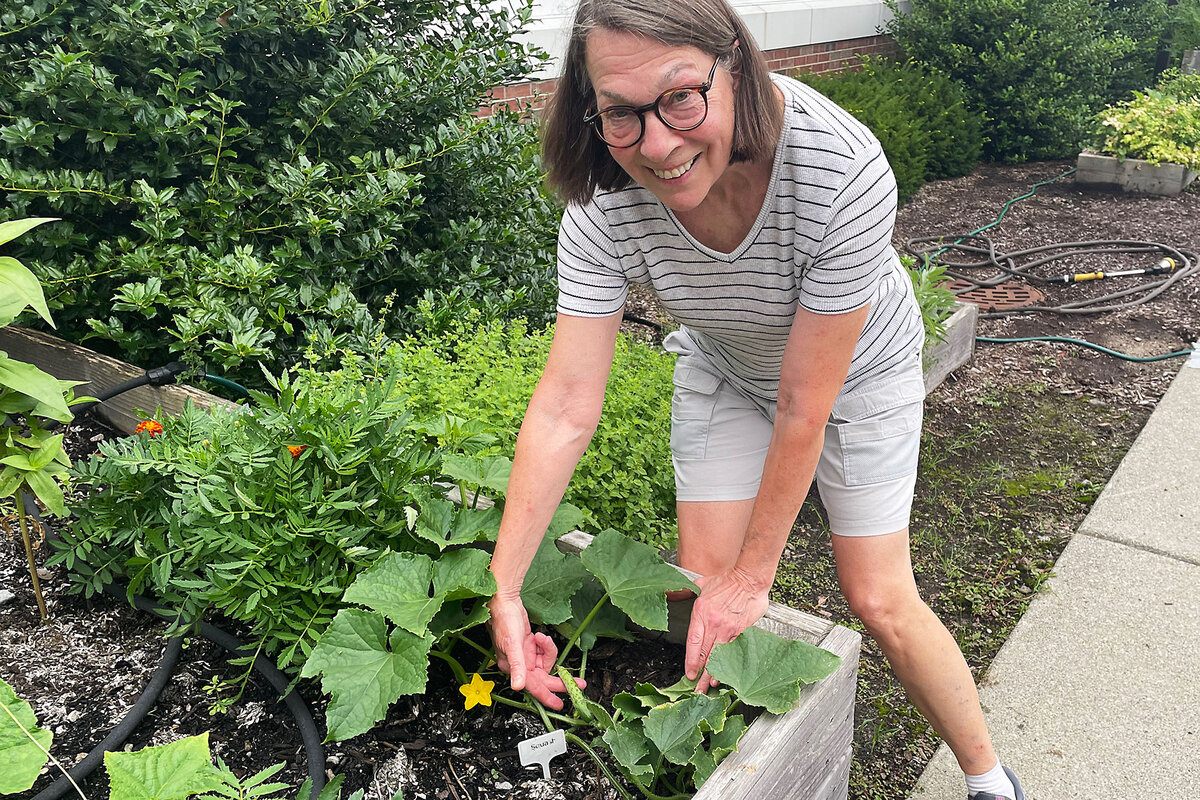Dropping the ‘senior’ in senior center: Beyond bingo, there’s speed dating and travel
| New York and Groton, Conn.
Ask many of today’s 60-, 70-, or even 80-somethings if they go to a senior center and they’ll probably grimace at the staid reputation of that institution of American old age – people silently watching TV, shuffling cards, picking up a mushy-looking meal, or minding their bingo chips.
But shifting demographics – namely, baby boomers living longer, more active lives – are driving an evolution of senior centers that now effectively serve two generations between the ages of 60 and 100.
There are an estimated 11,000 senior centers in the United States according to the National Council on Aging (NCOA). It reports a new dynamism and broader sense of purpose driving the change – from redesigning buildings to expanding services for active older people.
Why We Wrote This
A story focused onSenior centers are evolving into active, modern cultural hubs to meet the needs of baby boomers and their Silent Generation predecessors who are living longer, more active lives.
“We have this huge generational shift where senior centers that were created by the Greatest Generation were carried on for the Silent Generation,” says Dianne Stone, associate director of network development and engagement at the NCOA’s Modernizing Senior Centers Resource Center. “But there’s this new generation pushing in from behind, and it changes the way that we do things.”
Bingo and card games aren’t gone, she says, but if you think that’s all a senior center offers, think again. Indeed, think: speed dating, pickleball, tech labs, song and dance, cooking classes, therapy dogs, and … ditching the word “senior” altogether.
Rebranding active old age
Dropping the word “senior” is part of a rebranding trend.
The Thrive55+ Active Living Center in Groton, Connecticut – formerly the Groton Senior Center – did this last year. It expanded its footprint to 35,000 square feet more than a decade ago because, says program supervisor Kathy Williams, the center had a growing number of users and not enough space to accommodate them.
But the pandemic hit senior center attendance hard. Ms. Williams says as the center reopened and staff worked out how to draw people back, they realized it was not attracting everyone it could. There were plenty of local people who had never set foot there, even before the pandemic.
So early in 2023, after consultation with the community and longtime users, the center changed its name.
“The nonusers didn’t like the name ‘senior’ because it made them feel old,” says Ms. Williams. Meanwhile, the center wanted its name to convey what users reported they were doing: thriving.
The word “senior” doesn’t deserve its negative connotations, says Ms. Stone, of the Modernizing Senior Centers Resource Center.
“The problem we have is not with the name ‘senior center,’” she says. “It’s with the stigma and ageism that surround the name ‘senior center.’”
In the case of Thrive55+, the change had its desired effect, says Ms. Williams. More people have come through the doors who just needed to see and experience the place in order to inspire them to come back.
Thrive55+ has a technology lab, multiple fitness rooms, a hair salon, and a café. It began art classes at the request of multiple patrons, and the watercolor class now has a waiting list. Lately, it’s gotten into gardening: The center has a series of raised beds on its grounds, where teams of volunteers tend vegetables and herbs, which are then used by the kitchen staff in preparing the daily three-course lunch, which costs $6.
Anna Arder, a retired computer scientist using the printer in the tech lab, says a meal of the same quality would cost “at least $25” at a local restaurant. She describes Thrive55+ as “the Taj Mahal of senior centers.”
Speed dating, Elvis impersonators, and Bollywood dancing
A National Council on Aging survey of 400 centers nationwide found almost half reported they were planning to build or renovate in the next five years, says Ms. Stone.
Gleaming gyms are often a feature of redesigns, reflecting what Ms. Stone describes as baby boomer interest in maintaining their health.
One rebuilt center in Portage, Michigan, has a fitness center and pickleball courts in a state-of-the-art building. It also offers more unusual fare. Since its opening in 2022, in addition to offering speed dating, it has hosted a mass renewal of wedding vows presided over by an Elvis impersonator.
Membership more than doubled at the facility. “Newly constructed or renovated centers invariably report surges in their participation,” says Ms. Stone.
Other centers offer sessions with therapy dogs, and classes in cooking for one and Bollywood dance, to name a few.
Some centers just listen to what clients want
For some, modernization means something other than a renovation or new activities. Attracting a more diverse user base, for instance, by signaling to the community that a center is friendly to LGBTQ+ people or it focuses on diverse cultures.
The Open Door Senior Center, a hive of activity in New York’s Chinatown, is a case in point. While it has not rebranded, it makes a conscious effort to adapt its programing to what membership – 60% of which is over 80 years old – wants. The result is a lively space in which younger members have asked for and gotten “bone-in” meat in soup (the flavor is better) and can satisfy their curiosity about the arts by attending public performances in the city.
The rhythmic vocals of members singing Chinese opera float through the halls, down which you can also hear the click of mah-jongg tiles, the twang of the qinqin – a Chinese lute – and the hollow ”pock’” of table-tennis balls being batted back and forth. Woven through it all are the rising and falling tones of Cantonese, Mandarin, and Fujianese as scores of center members come and go throughout the day.
In the table tennis room, fans whir while pairs of players in their 70s and 80s dart at the ball, exclaiming in Cantonese while working up a sweat.
Stephen Chen, a retired postal worker in his late 80s, sits on a bench along with several others, perusing a Chinese-language newspaper and waiting for his next turn to play.
“We all come here to play pingpong and see friends and talk to people,” he says. “It’s very important people keep talking” as they get older, he adds, socializing with others. He lives with family members, but says coming here gives him a boost he can’t get elsewhere.
Many of New York’s ethnically Chinese older adults are lower-income, and never learned to speak English well, if at all. But their lives here are rich. They come not just to meet up with friends and neighbors but to connect with their culture, eat the food they grew up on, and challenge themselves both physically and mentally with everything from technology classes to tai chi.
Clients of this center range in age from 60 to 107, which means designing programs for two generations. Po-Ling Ng, Open Door’s director, says older members are likely to enjoy Chinese cultural pursuits, including games like mah-jongg. Younger ones want other activities – such as American and Latin American dance, and trips to cities like Washington – thrown in. Food is a unifying force, and a hot lunch is served each day for 50 cents. Everyone enjoys meals like Shaoxing curry chicken balls and bean and cauliflower with sliced pork.
Ms. Ng has lived in the United States since her 20s and is now in her early 80s. She believes the key to a healthy lifestyle, regardless of age, is staying engaged with the world around you.
“I said to the seniors, if you want to improve your life, you should keep learning: learning by doing, doing by learning,” she says.
A senior center by any other name ...
Back at Thrive55+ in Groton, Liz Carlson is also keen to stay active. A retired kindergarten teacher in her 60s, Ms. Carlson sits on a bench with friends outside a fitness room, leaning on a cane, waiting for a seated exercise class to begin.
“We got it all going on here!” she says, adding that her 95-year-old mother also attends.
She rolls her eyes at the rebranding. As far as she’s concerned, she says, “It’s still the senior center.”




